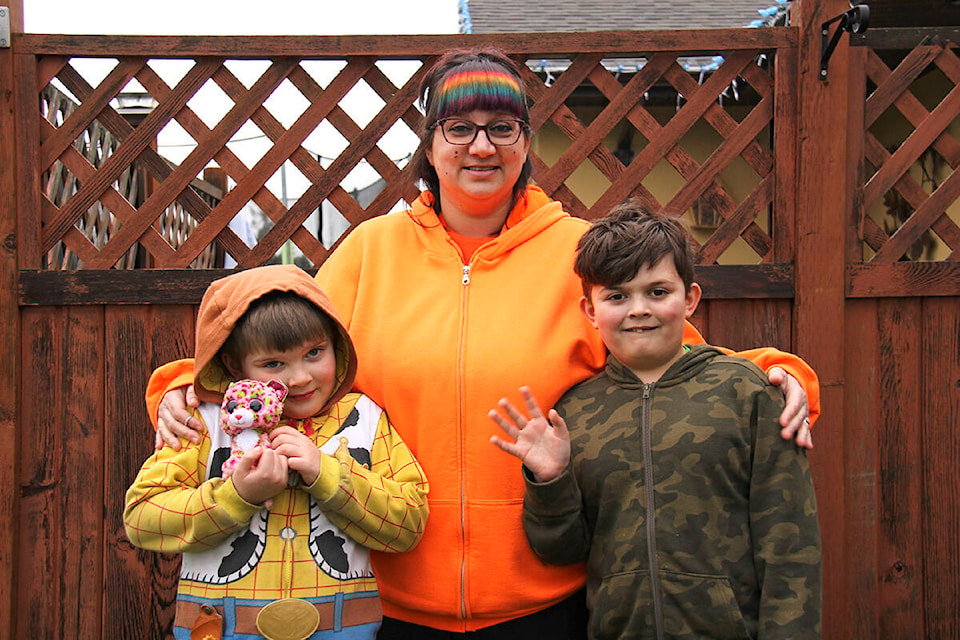Tracey Werry and Vanessa Taylor know their kids’ needs aren’t as obvious as some other children with autism.
At school, their kids aren’t the ones acting violently, biting people, or running away.
Werry’s sons Myles, 7, and Elliott, 9, who also have attention deficit hyperactivity disorder (ADHD), are verbal and can “hold it together” for periods of time. They’ve also both mastered “masking,” a survival strategy used by many neurodiverse people to hide their autism traits and try and fit in.
Similarly, Taylor said her nine-year-old son, Lysander, and six-year-old daughter, Elise, are very good at pasting a smile on their faces.
It’s not that they don’t do better with help, it’s just that their needs aren’t as pressing as those of some other kids. As a result, the Greater Victoria moms say their children have always been left behind.
“He’s the person they pull the education assistants from first,” Taylor said of Lysander. “They’re the forgotten children.”
Now, the moms fear B.C.’s decision to end individualized autism funding and implement a needs-based hub model instead will once again place their children lowest on the priority list.
It’s unclear exactly what “needs-based” will mean. Speaking with Black Press Media in December, Minister of Child and Family Development Mitzi Dean simply said each child will receive the supports they need, but didn’t elaborate on how that would be determined.
Werry said she had a similar experience during an engagement session in November, where parents’ questions went largely unanswered.
“(They were) just regurgitating the same sort of scripted answers over and over again,” she said.
READ ALSO: Victoria autism support providers blindsided by provincial funding changes
Part of the province’s stated reasoning for switching models is to accommodate approximately 8,300 more children who previously haven’t qualified for funding. Asked whether the new model would match the annual dollar amount children with autism currently receive – $22,000 for those under age six, and $6,000 for those aged six to 18 – Dean said she couldn’t comment on future budgets.

It’s an unanswered question that has parents like Werry and Taylor believing the hub model may be a cost-saving strategy that will leave their children with less.
And it’s not that they don’t think every neurodiverse child deserves the support they need. If anything, Werry and Taylor say more funding is needed for everyone, having spent every cent of their children’s over the years. But the moms don’t want their kids’ needs to be pitted against that of others.
They fear that because their kids have learned to mask, people on the outside don’t understand how much support they do need.
“I am scared to death that someone who is not qualified is going to brush over them,” Taylor said.
The truth is, both Werry and Taylor are home full-time to ensure their kids receive the help they need, and they see things that no one else does.
Werry remembers spending two to three months prepping her kids before throwing their first big birthday party in 2019. People complimented Werry on how well it went, having no idea what it took to pull it off.
Meanwhile, Taylor has been sending Elise with an extra set of clothes to school everyday, because she hasn’t been assigned an education assistant and chooses to wet her pants instead of struggling to find the washroom by herself.
Elliott and Lysander have behavioural profiles that predispose them to anxiety and depression if they don’t receive enough support. Last year, Werry began homeschooling her kids after Elliott started expressing suicidal ideation.
Werry and Taylor know what their kids need, and having that choice taken away from them is terrifying.
There’s another fear, too. Werry and Taylor are both Indigenous and worry a more government-controlled system could open their children up to a long history of prejudice.
READ ALSO: Anti-Indigenous racism embedded in B.C. healthcare system: report
The First Nations Leadership Council wrote in a November letter to Dean that it “wholly rejects” the new model, calling the decision a “bewildering” step backwards and out of line with the UN Declaration on the Rights of Indigenous Peoples.
But the province is plowing ahead with its decision, promising a full transition to the hub model by 2025.
Werry, Taylor and many other B.C. parents are stuck in limbo until then, left feeling terrified of what may come.
Do you have a story tip? Email: jane.skrypnek@blackpress.ca.
Follow us on Twitter and Instagram, and like us on Facebook.
